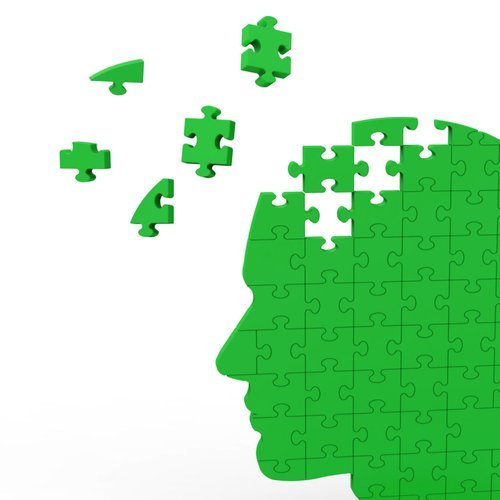We offer several comprehensive treatments that incorporate the latest in functional neurology. Each program begins with a detailed assessment and is tailored to the specific needs of the individual.
Services & Therapies
Neurological Testing & Rehabilitation
Transcranial Doppler Imaging
Neuromuscular Re-Education
Vision Therapy & Gaze Stabilization
Motor Sequencing & Timing Training
Sensory-Motor Integration Therapy
Photobiomodulation Therapy
Soft Tissue & Myofascial Release (MFR)
Neuro Functional Dry Needling
Electrical Muscle Stimulation (EMS)
Cold Laser Therapy (LLLT)
Nutrition & Supplement Support
Home Exercise Programs
Somatosensory Stimulation (RPSS)
Video Nystagmography, Saccadometry
Computerized Postural Stability and more!
Our Programs
NeuroReset
Using science-backed, highly effective therapies to promote the process of neuroplasticity in order to restore neurological function
Concussion Recovery
Integrating advanced technology and techniques to diagnose, assess, and treat concussions and mTBI’s
NeuroDevelopment
Performing fun & challenging activities to drive neuroplasticity and improve coordination, focus, and brain balance
We use several types of advanced modalities to evaluate and treat our patients, including the following:
Computerized Assessment of Postural Stability (CAPS®) is the gold standard in balance assessment technology. It uses a force plate that provides a detailed evaluation of a patient’s balance over time.
Videonystagmography (VNG) is an oculomotor (eye movement) assessment that is an important part of our examination. Impaired eye movements have been identified as a common post-concussion problem and can lead to symptoms such as dizziness, headaches, difficulty reading or using a computer. We use special infrared goggle technology to get an objective measurement of oculomotor function.
Interactive Metronome provides tailored training to improve motor sequencing, neural timing, cognition, and behavioral skills. To complement the in-office training that we do, we offer a home training program to further promote neuroplasticity and continue with rehabilitation.
Dynavision D2™ is the leading visual motor and neuro-cognitive rehabilitation device used for all stages of concussion management, better decision making and concentration under stress. The D2™ evaluates and trains visual acuity and cognitive processing while helping to improve reaction time, peripheral visual awareness, and functional mobility.
Erchonia Low-Level Laster uses FDA-approved low-level laser therapy (LLLT) to alter cellular functions and provide noticeable pain relief. LLLT has a photochemical effect that naturally reduces oxidative stress and increases the production of ATP, an energy-carrying molecule found in the cells of all living things. This innovative technology targets numerous conditions with no pain, no side effects, and no downtime.
Neuro Sensorimotor Integrator or NSI, is designed for, and available only to Functional Neurologists. Using a 50 inch HD touch screen TV, the NSI is designed to offer a host of therapy procedures to a wide range of patients requiring visual or neuro-therapy following: Traumatic brain injury/Concussion, Whiplash, Neurological Disorders, Vestibular & Balance Disorders and Spinal Cord Injuries
Motion Guidance Laser guided therapies that add a visual component to simple range of motion exercises and add proprioceptive awareness drills to any body part.
Repetitive Peripheral Somatosensory Stimulation RPSS, also referred to as Somatosensory Evoked Potential (SSEP) tests and/or stimulates the conduction of your nervous system as part of treatment.
EQ Brain Performance is a neurocognitive assessment that objectively measures functionality across a broad array of cognitive tasks that challenges the brain, with recall, short-term working memory, motor planning, recognition, spatial mapping, balance, executive functionality, reaction time, etc.
Neurofunctional Dry Needling is a precise nerve stimulation or electrical stimulation to a desired neurofunctional target to modulate any abnormal neurological activity and increase blood flow to the area to aid in the healing cycle. Our model is function-based as opposed to disease-based, allowing us to target a variety of dysfunctions.
Phoenix Wave Technology works well for soft tissue injuries, muscle spasms, and for athletes seeking quicker recovery from workouts and training. This equipment activates the muscles up to 500 times per second using electrical impulses. The patented square waveform allows for deeper muscle penetration to work muscles that are often overlooked in the recovery process, thus creating lasting results.
Saccadometer uses infrared videography to observe eye motion following visual stimuli and compare it to expected norms. This technology allows us to identify any visual latency or inaccuracy that could come as a result of trauma. Gaze stability and dynamic inaccuracies are often the foundation of post-concussion problems.
Vielight Photobiomodulation The basis of all our thoughts, behavior and emotions is the interaction between neuronal networks communicating with each other. This interaction leads to the formation of neural electrical signals known as brainwaves. Brain stimulation via photobiomodulation stimulates neuronal mitochondria, which increases celullar energy levels. This results in improved efficiency in neural signaling and communication. Vielight technology is the first in the world to demonstrate the ability to modulate and alter brainwaves using NIR electromagnetic (light) energy, measured through EEG.
Transcranial Doppler Ultrasound provides rapid, noninvasive, real-time measures of cerebrovascular function. TCD can be used to measure flow velocity in the basal arteries of the brain to assess relative changes in flow, diagnose focal vascular stenosis, or to detect embolic signals within these arteries. TCD can also be used to assess the physiologic health of a particular vascular territory by measuring blood flow responses to changes in blood pressure (cerebral autoregulation), changes in end-tidal CO2 (cerebral vasoreactivity), or cognitive and motor activation (neurovascular coupling or functional hyperemia).



















